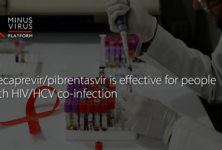New Rochelle, NY, February 9, 2017—A comprehensive collection of articles describing the broad scope and current status of this global effort is published in a special issue of AIDS Research and Human Retroviruses, a peer-reviewed journal from Mary Ann Liebert, Inc., publishers. The third annual Special Issue on HIV Cure Research is available free on the AIDS Research and Human Retroviruses website.
Leonardo Calza and coauthors from University of Bologna (Italy), have shown that statins, which are commonly prescribed to lower blood lipid levels, can also significantly reduce the concentration of D-dimer, a marker of coagulation, and of two markers of inflammation known as interleukins (IL-8 and IL-10) in HIV-infected individuals. The anti-inflammatory properties of statins and their potential effects on blood clot formation could help reduce HIV-associated comorbidities such as cardiovascular disease. The researchers present their findings in the article entitled “Significant Decrease in Plasma Levels of D-Dimer, Interleukin-8, and Interleukin-12 After a 12-Month Treatment with Rosuvastatin in HIV-Infected Patients Under Antiretroviral Therapy.”
In the article “Lower Frailty Is Associated with Successful Cognitive Aging Among Older Adults with HIV,” Lindsay Wallace and coauthors from Dalhousie University (Halifax, Canada), University of Modena and Reggio Emilia (Modena, Italy), and University of California San Diego, identified factors associated with better cognitive function among HIV-infected individuals 50 years of age or older being treated with combination antiretroviral therapy. The researchers found that study participants who scored lower on a frailty index were less likely to have neurocognitive impairment.
Heather Grome and colleagues from Vanderbilt University Medical Center (Nashville, TN), report on the role that persistent T-cell and macrophage activation in HIV-infected adults on combination antiretroviral therapy may have on the function of arterial blood vessels. The effects of HIV-related chronic immune activation on the arterial lining and vascular smooth muscle may promote the development of atherosclerosis and plaque formation that can lead to cardiovascular disease. The researchers present measures of blood-based inflammatory and immune activation markers and the results of brachial artery flow-mediated dilation on ultrasound in the article entitled “Association of T Cell and Macrophage Activation with Arterial Vascular Health in HIV.”
“It is becoming clear that although HIV-infected individuals can control the amount of virus in their system with antiviral treatments, there are still negative health consequences that look like premature aging, including cardiovascular disease and cognitive impairment,” says Thomas Hope, PhD, Editor-in-Chief of AIDS Research and Human Retroviruses and Professor of Cell and Molecular Biology at Northwestern University, Feinberg School of Medicine (Chicago, IL). “These three papers and others in the Cure issue seek a better understanding of the cause of this accelerated aging. The Calza article suggests that taking statins, which reduce lipid levels, may be an effective treatment to reduce damaging inflammation in HIV-infected individuals taking appropriate antiviral therapy,”
Research reported by Grome et al. was supported by the National Institutes of Health under Award Numbers K23 100700, K24 AI65298, UL1 RR024975-01, and P30 AI110527. The content is solely the responsibility of the authors and does not necessarily represent the official views of the National Institutes of Health.
About the Journal
AIDS Research and Human Retroviruses, published monthly online with open access options and in print, presents papers, reviews, and case studies documenting the latest developments and research advances in the molecular biology of HIV and SIV and innovative approaches to HIV vaccine and therapeutic drug research, including the development of antiretroviral agents and immune-restorative therapies. Content also explores the molecular and cellular basis of HIV pathogenesis and HIV/HTLV epidemiology. The Journal features rapid publication of emerging sequence information, reports on clinical trials of emerging HIV therapies, and images in HIV research. Tables of content and a sample issue may be viewed on the AIDS Research and Human Retroviruses website.
About the Publisher
Mary Ann Liebert, Inc., publishers is a privately held, fully integrated media company known for establishing authoritative peer-reviewed journals in many promising areas of science and biomedical research, including AIDS Patient Care and STDs, Viral Immunology, and Journal of Interferon and Cytokine Research. Its biotechnology trade magazine, GEN (Genetic Engineering & Biotechnology News), was the first in its field and is today the industry’s most widely read publication worldwide. A complete list of the firm’s 80 journals, books, and newsmagazines is available on the Mary Ann Liebert, Inc., publishers website.


 ПОИСК ПО САЙТУ
ПОИСК ПО САЙТУ  поиск по ресурсному центру
поиск по ресурсному центру 



